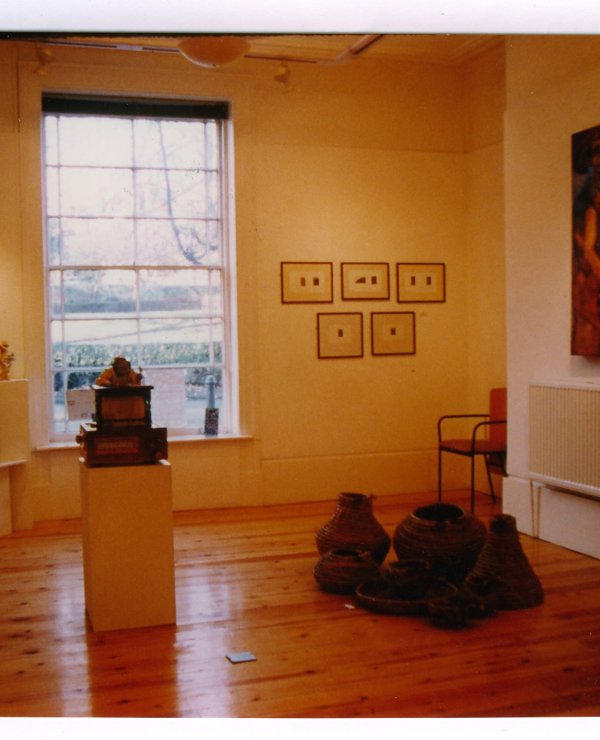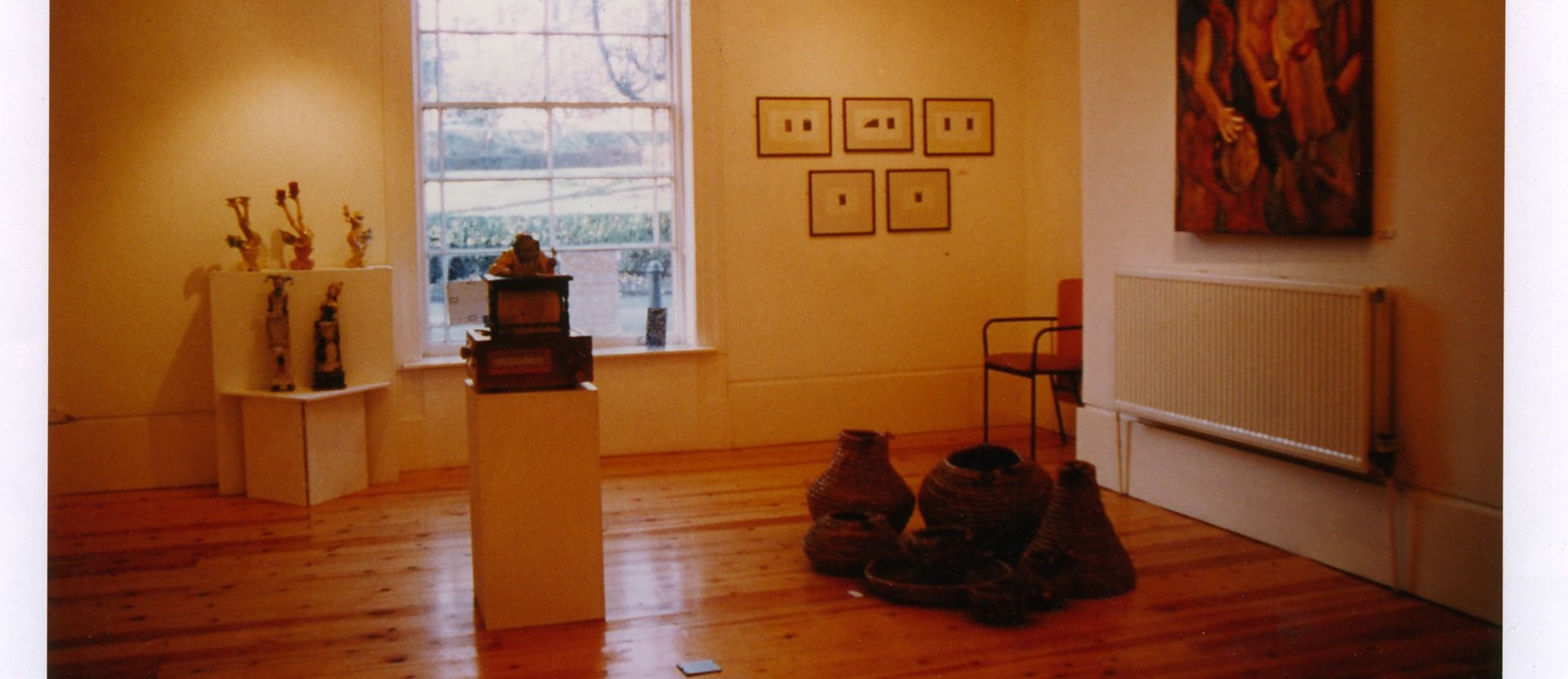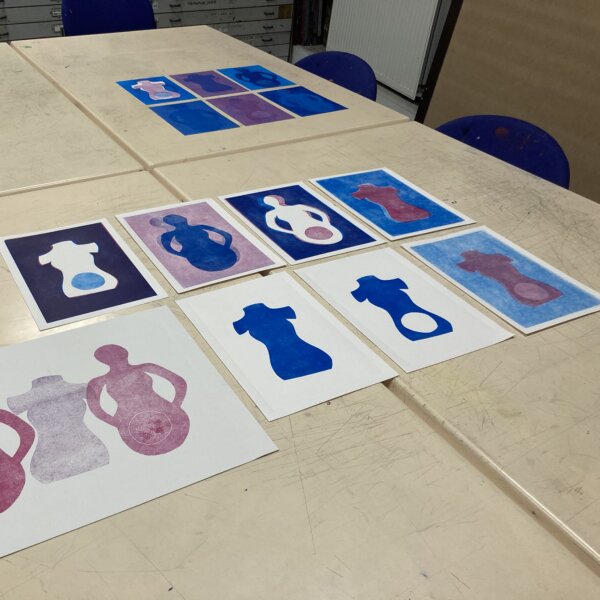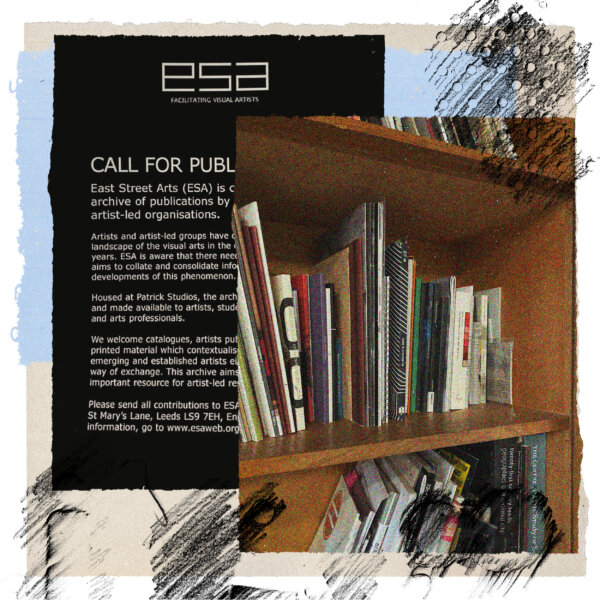After meeting in 1989, by 1993 Karen Watson and Jon Wakeman found themselves living in Meanwood, Leeds piecing together what was next for their artistic endeavours. After a short search for a suitable property to develop their own studio space for their work, and the work of others, they signed the lease for East Street Mills on East Street, Leeds, quite near to the city centre.
After visiting other studios in Meanwood (Oblong and Third Floor) they had acted on impulse to set up something for themselves.
East Street Mills, a typical Victorian textiles mill, was taken for an initial three months three rent through Gibson Twaits estate agents. This gave Karen and Jon 2,000 square feet on the third floor, which although in very bad repair, was brimming with possibilities.

Faced with a huge task, it actually took six months to get started. Once the space was cleared it was set up with minimum facilities (a basic kitchen and kiln area) and they began to advertise for artists to take space in the then Leeds alternative newspaper Leeds Other Paper.
The advert was a success with many artists getting in touch wanting to look at the spaces available. Soon enough the first artist came on board including Martyn Hill and word of mouth saw more joining. With the eight spaces available filled, more of the empty space was expanded into bit by bit. The landlord allowed this until another chunk of space was taken over and then extended the lease.
As with any new venture, there was a lot of learning on the job, as things developed. Jon and Karen soon learnt basic management skills, because of the need to fill as many spaces as possible to keep costs affordable for artists. With no funds available, artists were asked to bring their own means of dividing the spaces which were simply marked out with chalk on the floor.
The original space was big enough for eight artists, a kitchen, a dark room and a kiln area, which provided enough income to cover the majority of costs. At this time, Karen and Jon didn’t have enough to pay themselves, informing Leeds City Council that they were planning to apply to become a charity.
Attending a free course on project management and listening to the thoughts of artists about their needs, the space was kept running successfully.
It became clear that artists didn’t want a cooperative, or to be part of a decision-making structure, but to be autonomous in their work while gaining support and guidance. They felt, much like Karen and Jon, that Leeds was not equipped to support artists leaving university or art schools. This finding shaped what East Street Arts would become with a vision to:
- support artists to thrive through their artistic practices
- engage with the decision-makers and policy makers to ensure ground-up is talking to top-down
- develop opportunities for artists and their audiences to come together.
Claire Medley, who worked at Leeds University joined the small team for a couple of years, bringing so much to the early development of East Street Arts and how it progressed.
For Karen and Jon, making a success of this new enterprise became a passion. They took on part time jobs and made the most of the government’s Enterprise Allowance Scheme. Nothing was going to prevent them from growing this studio space and the support for artists.
It is hard to pinpoint when the name East Street Arts was officially adopted, but it came from the space. East Street Arts didn’t become an official company until 1998 or a charity until 1999, but 1993 is deemed the starting point because that is the real starting point.
So much happened in the early years of East Street Arts, including these highlights:
- Brought together Oblong Studios and Jackson’s Yard (and sometimes Third Floor Studios) and set up Leeds Artists Network. The group met for four years and created a shared newsletter, pooled useful information and delivered city-wide events specifically Networking November in 1994.
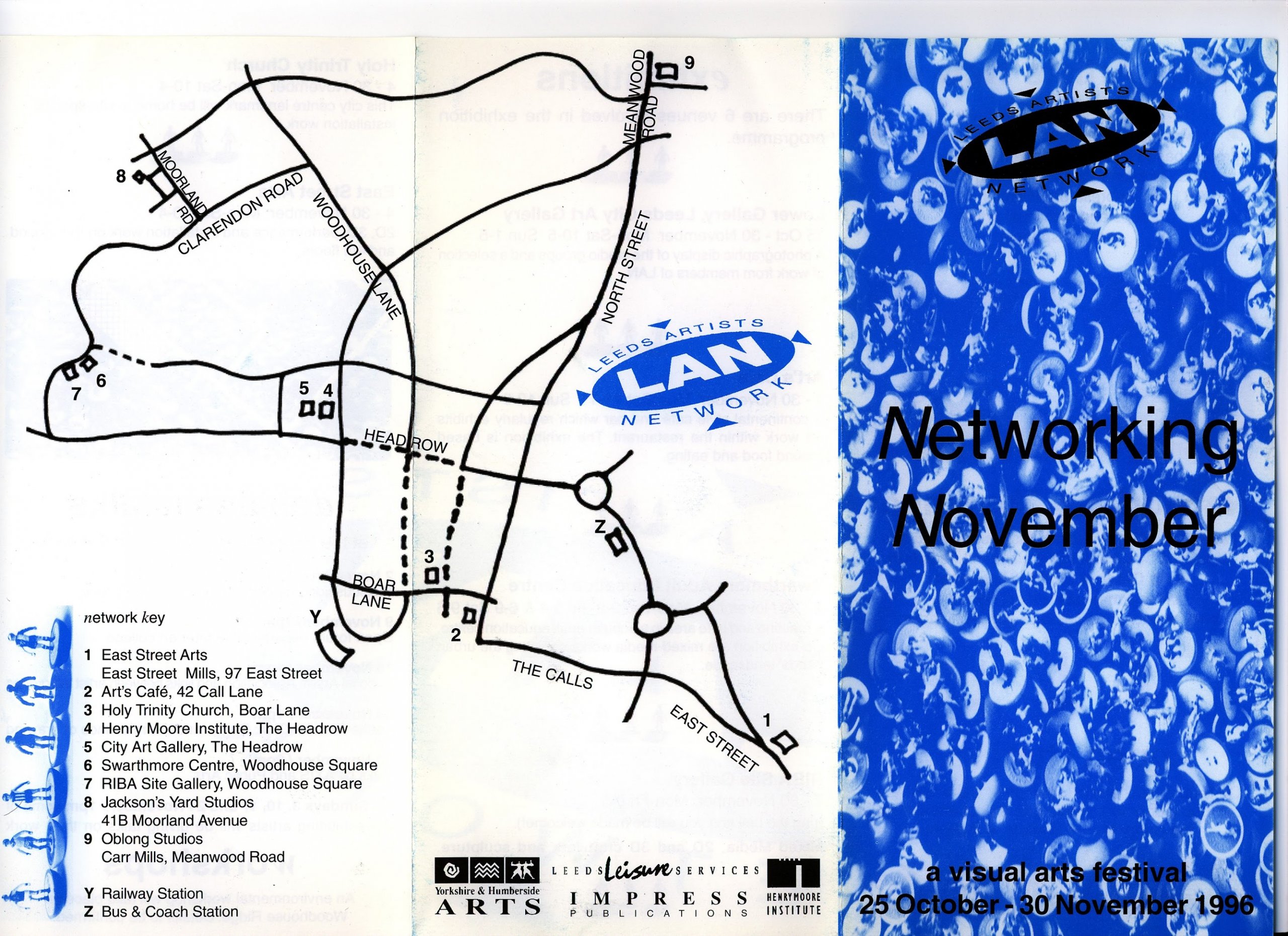
- Met Claire Madely who joined for a few years and helped develop relationships in Leeds and delivered the first exhibition in 1994 The Ceramic and Textile Show, held in two empty railway arch units opposite St Peters church on Kirkgate.
- Joined the National Artists Association, with Karen sitting on their steering group for approximately three years.
- Started fundraising through Arts Council, Leeds City Council and the government’s Single Regeneration Budget to provide events and explored a range of exhibitions, performances, talks and workshops.
- Took on a substantial amount of the third floor, and the smaller fourth floor extending the amount of space for artists.
- After Leeds Artists Network came to the end of its life, Leeds Visual Arts Forum was set up with the help of the West Yorkshire Playhouse. LVAF was a wider group and included curators, venue managers and was chaired by Dan Bates from the Playhouse who also provided free space to meet.
- Took on the programming of the Brahm Gallery from Chris Taylor which was a small gallery space at the entrance of the branding company’s headquarters in Headingley. East Street Arts curated exhibitions there voluntarily for three to four years.
- Started a project and exchange with the Dortmunder Gruppe artists, cementing a relationship that continues to this day and reflects Leeds and Dortmund’s status as twinned cities.
- Successfully applied for new small lottery grants which enabled the purchase of the organisation’s first computer (an Apple clone!) that was part of a project to develop a publication called Contact Point. The magazine consisted of four issues that took years to produce, not the months that were initially planned.
- Became involved in various policy focused and sector groups including Concourse, research and audit reports for the arts in Leeds, and became a voice for artists within the council’s arts and cultural strategies.
This was just the beginning of the East Street Arts story and there were more exciting things to come.
Other things!
-
News
Artist-Led Housing: Histories, Residencies, Spaces - available to buy!
Architectural researcher Dr Jonathan Orlek's brand-new publication, Artist-Led Housing: Histories, Residencies, Spaces is now available to buy.
-
News
Taipei Residency: Artist Call Out
Are you an artist using sound and audio-visual media at the core of your practice? Do you want to collaborate with communities and other artists to develop new artworks? Apply now! Deadline 12pm, Sunday 5 May 2024.
-
News
Leeds Creative Labs Follow on Fund: Herfa Martina Thompson Dr Zoe Tongue
Visual artist Herfa Martina Thompson and Law lecturer Dr Zoe Tongue first collaborated as part of Leeds Creative Labs, a programme that partners artists and academics, initiated by the University of Leeds’ Cultural Institute and facilitated in partnership with East Street Arts.
-
History
Listen to the Sounds of New Briggate
Sounds of New Briggate is our podcast series - hosted by local people, telling local stories - which celebrates New Briggate, a unique and vibrant high street in the heart of Leeds.
-
News
Artist Mohammad Barrangi’s large-scale murals come to the streets of Leeds
We're working with Leeds-based, Iranian-born illustrator and printmaker Mohammad Barrangi to bring three large-scale paper murals to the streets of Leeds.
-
Artist support
Submit your publications to our exhibition and learning library
Do you make books or printed materials on artist-led housing, live/work spaces, civic practice or living archives? Contribute now! Together we can learn.

